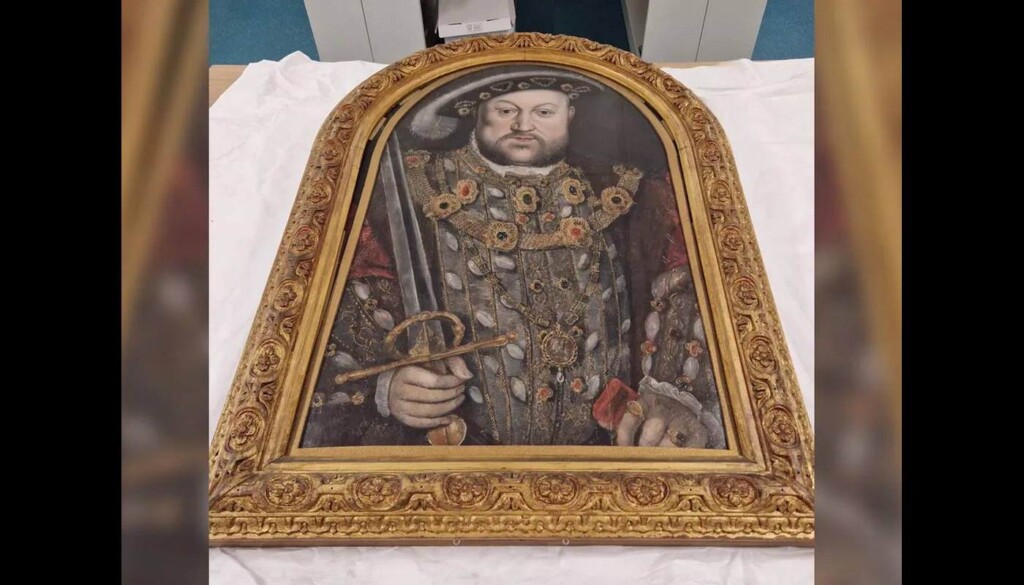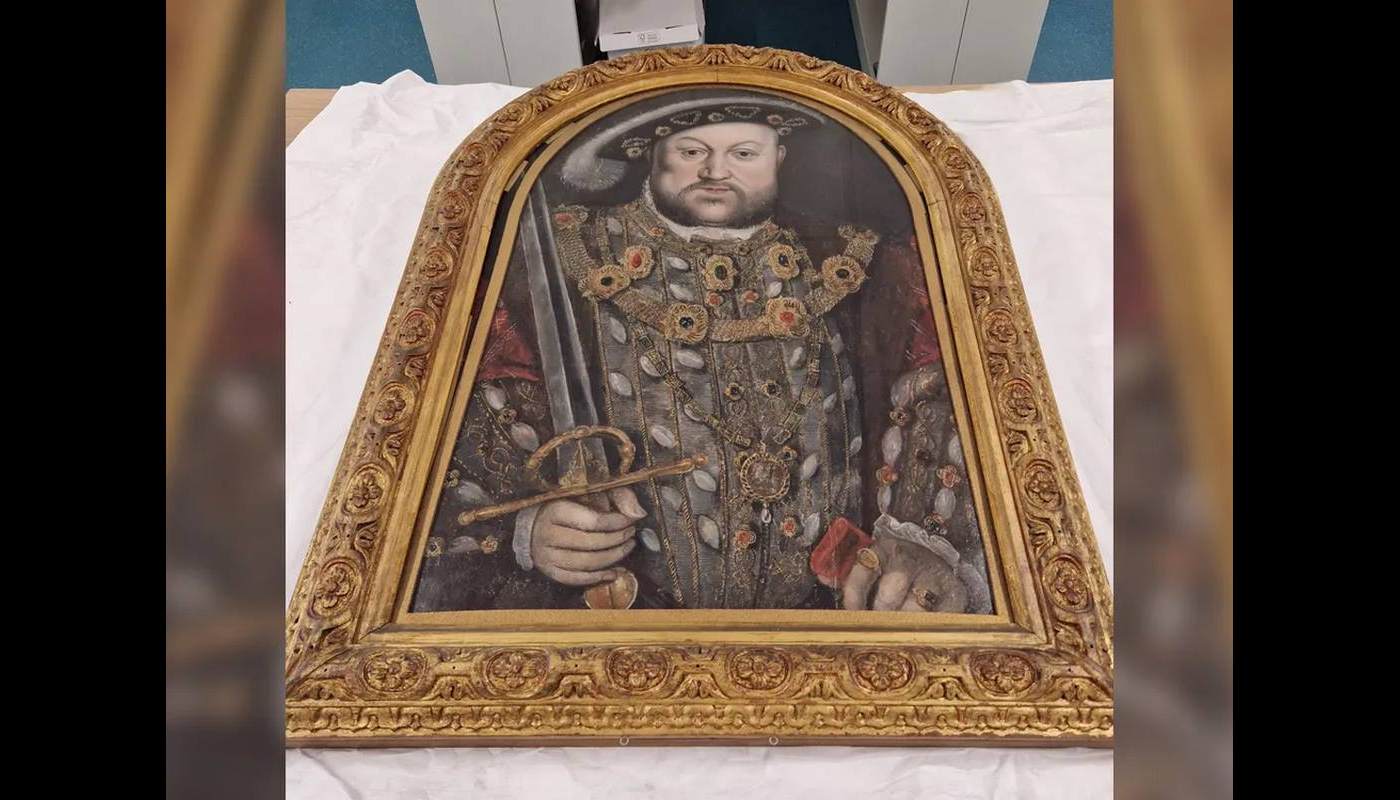
Social media allows for the darndest things: like this story from the UK where an art consultant and historian saw a post on X and noticed a lost work of art hanging in the background.
It was in the judge’s room of the Shire Court in Warwickshire, England, where the Lord Lieutenant of Warwickshire was hosting a soiree.
Art historian and consultant for Sotheby’s, Dr. Adam Busiakiewicz, came across the post on X by Warwickshire Lieutenancy by chance and noticed a portrait with a distinctive arched top depicting that most famous of English kings, Henry VIII.
Holding a sword and wearing his customary golden chains, the arched top gave Dr. Busiakiewicz the distinct impression of a set of portraits painted centuries ago depicting European royals like Henry, Richard III, and Catherine de Medici.
“Social media is a crazy thing,” Busiakiewicz tells CNN’s Lianne Kolirin, “because some people use it to watch cat videos and follow what’s going on in the world, and then people like me just look at what people have hanging on their walls.”
Painted by an anonymous artist known as the Sheldon Master, either an associate, relative or descendant named Ralph Sheldon incorporated the works into an architectural frieze at his Warwickshire estate, Weston House, where they hung at least until the 18th century.
Today, only a handful survive in public and private collections, with most disappearing after a 1781 auction. Busiakiewicz was able to visit Warwickshire and inspect the work himself. He noted that at 3 feet tall it was the same as other known paintings in the set. Additionally, the portrait was obviously done by a skilled artist.
LOVE A STORY ABOUT A LOST WORK OF ART?
- A Forgotten Masterpiece Was Hanging Above a French Woman’s Hot Plate–Now, it’s Heading to the Louvre
- Painting Assumed to Be a Copy is Real–After Note is Found Hidden in Frame Making it Worth Thousands
- Painting Stolen in a Heist 30 Years Ago Returned to its Native Scotland
- A Thrift Store Shopper Joked She’d Found a Famous Artist’s Work for $4 – and Actually She Really Had
“There are lots of Tudor corridor sets which were produced at the time,” Busiakiewicz tells the London Times’ Jack Blackburn. “But I think the Sheldon set is important because it was probably the grandest. They are much larger than the standard corridor set. They are also, I think, much higher quality.”
The provenance of the painting is unknown to any great degree, as its last known location was an auction purchase in 1901, before it was finally acquired by Warwickshire from the University of Cambridge. At neither time was the true identity of the painting suspected. A statement from Warwickshire City Council read as follows.
“We are grateful to Adam Busiakiewicz and Aaron Manning for sharing their expertise with us, which has led to the exciting identification of this piece connected to Ralph Sheldon. We look forward to working with art historians and experts to further explore the painting’s history and significance”.
SHARE This Remarkable Sequence Of Events And A Portrait Lost No Longer…




















